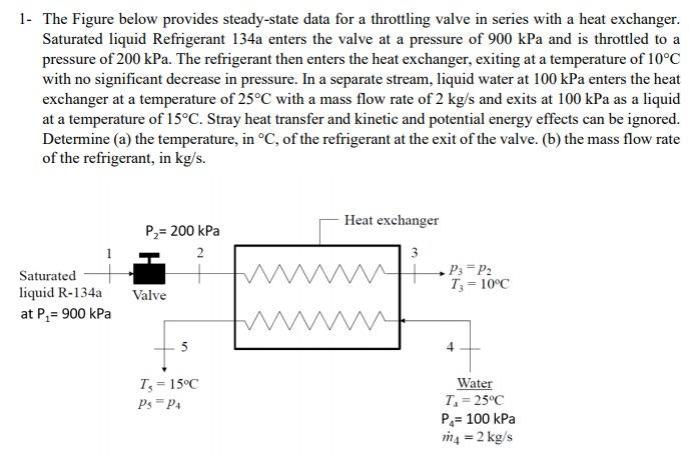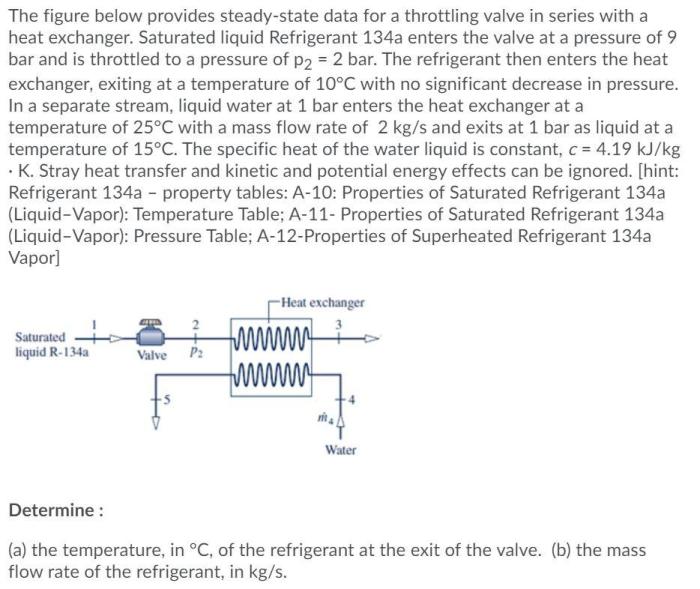The figure below provides steady-state data for a throttling valve, offering valuable insights into its performance characteristics. This data is crucial for analyzing and optimizing the operation of throttling valves in various industrial applications.
Steady-state data provides a snapshot of the valve’s performance under specific operating conditions, allowing engineers to evaluate its pressure drop, flow rate, and temperature effects. Understanding these relationships is essential for ensuring efficient and reliable system operation.
Introduction

The figure provided presents steady-state data for a throttling valve, offering valuable insights into its performance and behavior. Steady-state data plays a crucial role in analyzing the operation of a throttling valve, as it provides a snapshot of its performance under specific operating conditions.
Key Variables and Relationships: The Figure Below Provides Steady-state Data For A Throttling Valve

The key variables represented in the figure include pressure, temperature, and flow rate. These variables are interconnected and have a significant impact on the performance of the throttling valve. Pressure drop across the valve is directly proportional to the flow rate and inversely proportional to the valve opening.
Temperature changes can also affect the valve’s performance, as they influence the fluid’s density and viscosity.
Steady-State Performance Analysis
The steady-state performance characteristics of a throttling valve are typically represented by curves that show the relationship between pressure drop, flow rate, and valve opening. These curves provide insights into the valve’s efficiency and capacity under different operating conditions. The design of the valve and its operating conditions, such as the upstream and downstream pressures, influence its steady-state performance.
Pressure Drop Analysis
The pressure drop across a throttling valve is a critical parameter that affects the system’s performance. The data in the figure can be used to analyze the pressure drop as a function of flow rate, valve opening, and fluid properties.
By understanding the pressure drop characteristics, engineers can optimize the valve’s operation to minimize energy losses and ensure proper system functionality.
Flow Rate Characteristics
The flow rate characteristics of a throttling valve determine its ability to control the flow of fluid. The figure provides data that shows how the flow rate varies with changes in pressure drop, valve opening, and fluid properties. This information is essential for selecting the appropriate valve size and configuration to meet the desired flow rate requirements.
Temperature Effects
Temperature changes can have a significant impact on the performance of a throttling valve. The data in the figure can be used to analyze how temperature affects the valve’s flow rate, pressure drop, and other performance characteristics. Understanding the temperature effects is crucial for applications where temperature fluctuations are expected, ensuring reliable and efficient valve operation.
Practical Applications, The figure below provides steady-state data for a throttling valve
Steady-state data for throttling valves finds practical applications in various industries. By analyzing this data, engineers can optimize system performance, reduce energy consumption, and ensure safe and efficient operation. Examples include flow control in pipelines, pressure regulation in hydraulic systems, and temperature control in HVAC applications.
Quick FAQs
What is the significance of steady-state data for throttling valves?
Steady-state data provides a baseline for analyzing the performance of throttling valves under specific operating conditions. It helps engineers understand the valve’s pressure drop, flow rate, and temperature characteristics, enabling them to optimize valve design and operation for efficient system performance.
How does the pressure drop across a throttling valve affect its performance?
Pressure drop across a throttling valve is a critical factor influencing its performance. Higher pressure drop can lead to reduced flow rate and increased energy consumption. By analyzing the pressure drop data, engineers can optimize valve opening and operating conditions to minimize pressure loss and improve system efficiency.
